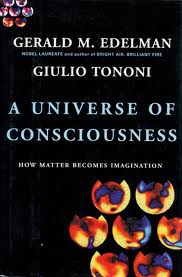Consciousness is our state of awareness and has been debated
among theologians for a long time. John Locke discussed consciousness as
perception that passes through the mind while Rene Descartes followed Cartesian
Dualism when pondering the differences between physical and mental matter. No
one has every truly defined, empirically broke down, or proven the existence of
consciousness. I had the pleasure of meeting a group of philosophers to discuss
the nature of consciousness in today’s world.
Of course I am not talking about sandal wearing theologians
coming out from some past century to share their Socratic wisdom. Instead of
unemployed philosophers the group was made of psychologists, computer engineers,
and even a mathematician. They are an eclectic crew that ranged from
individuals who wore t-shirts with formulas to those with proper business attire.
Each attended with their own interest in the topic from a professional and hobbyist
point of view.
The meeting was fast paced and gave each person just a
little time to discuss their understanding and knowledge of the topics.
Participants discussed the nature of consciousness, difference between mind and
consciousness and its application to artificial intelligence. The knowledge contained within this group of
enthusiast far surpassed that which you will find on the street.
What is Consciousness?
The group attempted to answer question with a variety of
different responses based upon their research and experience. Answers included
comments such as outside of self, neuro nature, reflectiveness, greater than
parts, universal, life force, subconscious, and awareness of right or wrong. It
is a property that has a meaning beyond the individual entity.
Consolidated
Definition: Consciousness is neurologically based intelligence and
awareness that transcends oneself to greater understanding of the environment.
Mind vs. Conscious:
The beginning of the discussion started with an attempt to
understand the difference between mind and consciousness but soon morphed into
the hypothetical place where consciousness is first realized. They used terms
like environmental adaptability, levels of consciousness, collective awareness,
relatedness of mind and consciousness, and evolving into consciousness.
Consolidated Definition:
Awareness is an evolving process that purposefully improves survival of oneself
and one’s species through greater levels of awareness (knowledge and understanding of self within one's environment.).
Artificial
Intelligence and Consciousness:
It is not currently believed that Artificial Intelligence
has the ability to create consciousness but is at present stuck in programing
and thinking. When machines become aware of their existence, survival, and form
a species they will be considered to be living with consciousness and therefore
engage in independent goal-directed behavior. At such time, machines will have a level of “free
will” and independence of thought beyond their programmers. This makes them a
living species of a different breed and a new developmental trajectory.


